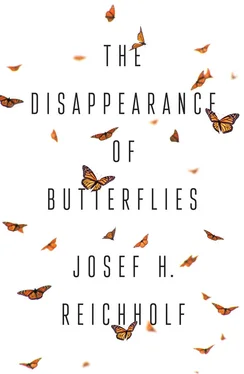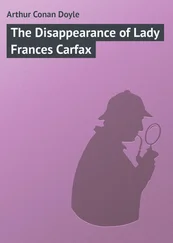With my studies of aquatic moths, I was only able to record a narrow spectrum of the insects that lived in gravel pits and small waterbodies. I observed their colony loss through the disappearance of the ponds in which dragonflies and frogs, and in dryer areas also lizards and beetles, had been comfortable. One by one, hedgerows and field copses also disappeared. The riparian woods by the River Inn were almost totally uprooted because of booming maize cultivation: the land was now worthless for growing trees, since firewood was no longer in demand, but had become highly profitable for farmers if they planted maize. The ban on woodland clearance came too late. Large parts of the riverine woods had already been destroyed and were further cleared over the years because the authorities did nothing to prevent it from happening. Perhaps it was only thanks to a series of wet summers that the wetter riparian woods along the River Inn remained untouched. Financial incentives for clearing woodland were eventually stopped.
It is with very mixed feelings that I think back to the 1970s when the fight for these alluvial forests played itself out and nature conservationists like me could only watch helplessly as piece after piece was cleared and converted into maize fields. The media and the general public were not very interested at the time. Such species-rich areas were referred to in the official parlance as ‘wasteland’ or ‘barren land’, descriptions that say everything about the value placed by large-scale agriculture upon animals and plants that have no direct commercial use. Sometimes I doubt whether our attitude to what is truly noteworthy has changed at all, even though one seldom hears talk of wasteland anymore. Words are interchangeable; it is far harder to change their underlying meaning, and there are setbacks time and again. Decades of serious attempts to replace the terms ‘raptor’ and ‘predator’ in Germany with ‘bird of prey’ and ‘carnivore’ (on the basis that ‘prey’ only exists in the eyes of the hunter) were fruitless. For some reason, young journalists in Germany have started using the term ‘raptor’ again quite openly, even though it disappeared from ornithological books long ago. ‘Pest’ is once again used for insects, regardless of whether or not they cause damage intentionally or even whether they cause any damage at all.
My aquatic moths caused no damage in the wild, in the small bodies of water or on lake shores. Unfortunately, the same could not be said of waterlily ponds. Water-lily species with thin leaves, in particular, were devoured by caterpillars, resulting in nothing more than an eyesore. In a garden pond with small, pink-flowering water-lilies most people want flawless floating leaves and, if possible, flowers that have not been spoilt by aphids. But anything that interferes with their look counts as damage, and for many an owner of such garden ponds it would be better if the little moths did not exist at all. Tropical aquatic moths also cause severe harvest losses in rice fields. The opportunity offered to me by the FAO (Food and Agriculture Organization) to carry out my investigations there did not attract me. The moths and butterflies that lived around us were interesting enough. Little was known in the 1970s about moths, apart from the forest pests. Nevertheless, it is the nocturnal moths, not their diurnal relatives the butterflies, that make up by far the largest proportion of the Lepidoptera species. Light itself would shed light on the darkness.
1 * The changes to the genus names and their current form are explained on page 112. They are hopefully now permanent.
The Benefits of Being Attracted to Light
They used to be called ‘sun children’, *flying creatures of the air that flutter here and there, apparently aimless yet self-sufficient, letting themselves be borne on the wind and seeking cover at the sight of the first clouds, since they cannot tolerate the shade. This romantic view is most likely still true for some species of butterfly. The world of Lepidoptera, however, in all its richness and diversity of species and behaviour, only really unfolds when twilight falls. Since we are diurnal, many of us would be surprised to know that there are more than ten times as many species of moth than there are of butterfly. It is only when moths ghost around the streetlights on a sultry summer night that we suddenly become aware of them.
Many caterpillars also prefer to feed in darkness. This protects them from the birds that hunt them by day. It is harder for the adult insects to escape bats, since they hunt at night. It is true that their ultrasound does not work as well in the thick undergrowth of leaves, twigs and branches. Moths that fly in the open air at night are much more likely to be caught. Certain species of moth have developed the quite extraordinary capacity to detect the ultrasonic pulses emitted by bats without having ‘heard’ them. Then, if they are struck by them, they let themselves fall into the grass or the bushes, as quick as lightning. This is quite hard for us to grasp. To offer a plausible comparison, if we had this capacity, we would be able to detect radar traps when driving and brake in time to avoid them, without being conscious of having done so. Night-flying moths are, above all, concerned with finding a flight path through the darkness without crashing into obstacles if, somewhere, perhaps several hundred metres away, a newly emerged female is exuding her own kind of sexual lure. The travelling males remain unscathed, which is surprising considering that they are practically flying blind with only the scent-sensors in their antennae to steer with. How they manage this never ceases to amaze me, since it is light that steers them off their course and causes them to bump into obstacles. ‘More light, worse sight’ is hard for us to comprehend, since we depend so much on vision.
Night-flying moths avoid the day and pass the hours of light resting under cover. They start to come alive towards the end of dusk, when the weakening natural light forces us humans to go to sleep or to use artificial light. Yet it is that very light that attracts almost all moths, as if by some magical force. Certain wavelengths are particularly effective: above all, the ‘weak’ ultraviolet light (UV-A) that is invisible to us. Moths can see it, just like many other insects and the majority of birds, since they have an optical pigment that is sensitive to the wavelength of UV light. Birds that hunt at night, however, such as owls, do not use UV light, but the remaining daylight from the visible spectrum (as we would). Some owls, such as the barn owl, can hear the squeaking of a mouse that extends far into the ultrasound range, and can use this to locate that mouse and accurately swoop down to catch it, but only if there is sufficient residual light for them to do so: they avoid flying in complete darkness. The moths and night-flying butterflies evidently also need such residual light. But based on the current level of knowledge, we can barely even begin to speculate how they process this and how they use it to manage their often quite rapid flights, since, in terms of structure and function, their eyes are not significantly different from those of the butterflies and day-flying moths.
The best nights for ‘light-trapping’ are the darkest ones with no moon, thick cloud cover and a light (warm) rain. Clear moonlit nights, on the other hand, are not very good. One may assume from this that moths orientate themselves by the moon and thus manage to achieve a relatively straight flightpath, since they can maintain a fixed bearing on the moon’s distant light. But even if this were enough to maintain a particular direction, for example on a migration north or south, as is undertaken by some migrant moths and butterflies (for example, the death’s head hawk-moth and other hawk-moths), it is of little help in avoiding collisions with leaves and branches in the woods or the garden. The fact that they are attracted by artificial light is only partially explained with reference to the moon, if at all. If one watches the moths as they fly towards the light, one will rarely see a straight, goal-oriented approach. Even the alleged spiral, with which they are supposed to approach light sources, is the exception rather than the rule, if it exists at all. And when is the moon ever so readily visible?
Читать дальше












